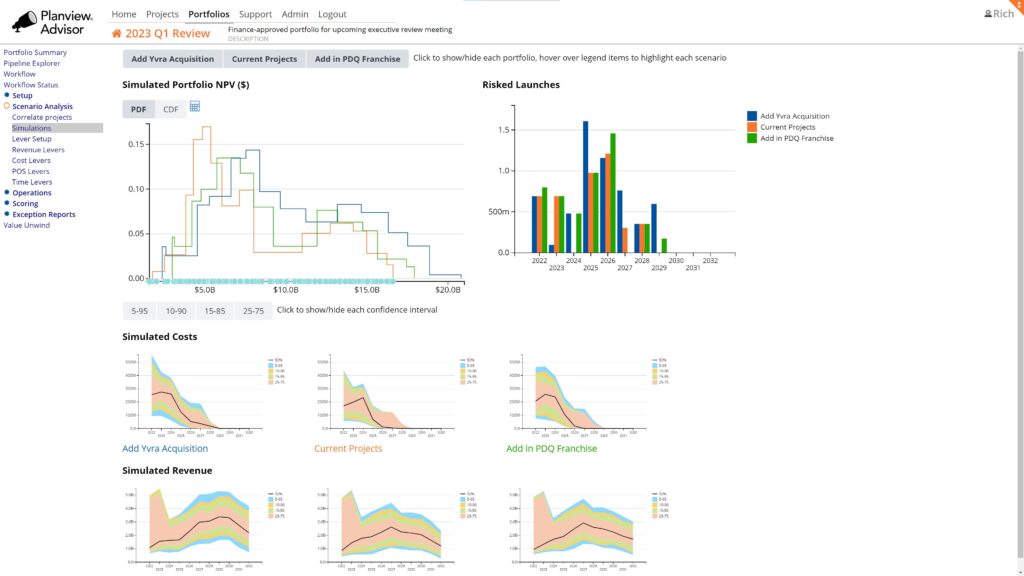
In 2023, Planview was pleased to sponsor several WHY Summit Events: Basil, Switzerland, and Philadelphia. A year later, we returned to Philadelphia and then headed cross-country to San Francisco for the WHY Summit’s 21st and 22nd American Pharma and Biotech Project, Program, and Portfolio Management Conference.
In this blog, we will illuminate a few common themes based on presentations and discussions around the conference.
Revisit WHY Summit 2023 in this blog
What is WHY Summit
The WHY Summit brings together project, program, and portfolio management professionals from the pharmaceutical and healthcare industries. This collaborative event aims to tackle emerging and recurring challenges in project management.
Events are held across Europe and the United States and feature insightful presentations and roundtable discussions that delve into critical topics, such as:
- Case studies and best practices around portfolio management functions within organizations
- The role of project management across different organizations
- Solutions for project prioritization, selection methodologies, risk analysis, and data-driven decision-making
- Cross-functional collaboration and engagement with external stakeholders
- Managing innovation, product lifecycles, R&D initiatives, and manufacturing projects
This series of events acts as a platform for pharmaceutical and healthcare sector professionals to share insights and provides unique opportunities to collectively drive project and portfolio management excellence in an often shifting and dynamic industry.
Life Sciences Portfolio Management Perspectives Coast-to-Coast
The two U.S. conferences we attended on the East and West Coasts featured distinct audiences from the pharmaceutical and biotech communities. While the Philadelphia summit hosted a mix of large to mid-size pharmaceutical and biotech organizations, smaller biotech companies mostly dominated the San Francisco summit.
Both conferences covered various topics, but two key themes stood out regardless of organizational size:
- How AI fits into the future of pharma and biotech portfolio management
- Change management in response to significant shifts in work environments and landscapes
AI
Attendees and speakers at both conferences were captivated by the topic of AI and how it fits into their work. Most agree that even though AI is gaining quick acceptance in PMOs across a wide range of industries, it has yet to be determined how best it can be applied in life sciences portfolio management.
The majority of the questions around AI fell into two distinct categories:
- AI as a function—How to utilize AI most effectively. Is it best applied solely as an efficient way to collect and collate data points, or should it play a more impactful role in surfacing valuable insights from existing data? Is there a way to create a balance of both?
- AI as a cost—How to choose the proper application of AI, considering an organization’s size, needs, and objectives, without making the technology cost-prohibitive.
In addition to seeking answers to these two main questions, we heard about some of the novel ways attendees were applying AI in their portfolio management, such as:
- Scenario analysis to augment portfolio management processes and strategy
- Creating guidelines to measure and track technical and regulatory success rates
- Automating reports to support people not working in the portfolio landscape day in and day out
- Building portfolio management solution knowledge bases as a way to encourage familiarity with the software as people transition to different roles

Change Management
The growth of AI represents a big part of the change management discussion. Still, since change management can be such an all-encompassing topic, we wanted to cover the two subjects separately for this overview.
Change management, in this sense and as it came up in presentations and discussions, was more about acknowledging the differences between hard changes (like AI) and soft changes (like an expanding remote workforce). The latter can take a variety of shapes and perspectives with wildly varying approaches dependent on an enormous number of variables.
These softer changes have long been in development but quickly ramped up at the onset of the pandemic and are still evolving. Thought leaders representing life sciences organizations, small and large, embraced the belief that when an organization prioritizes this kind of change management, it creates a net positive return in efficiency, value delivery, and employee retention. Ignoring change management often creates minor cracks in organizational infrastructures that, over time, can lead to major weaknesses and deficiencies.
Sentiment around change management in the life sciences industry focused largely on leadership. Discussions touched on themes related to governance and accountability, challenging preconceptions, and creating trust. Multiple presentations at the San Francisco and Philadelphia conferences spoke about using change as an opportunity to improve team alignment, with one speaker more aptly stylizing change management as change understanding—a key priority to remaining flexible, adaptable, and competitive.
One presenter summed it up nicely, emphasizing the need for life sciences project managers to find ways to help all parts of their organizations, from leadership down, effectively drive multi-company, multi-region collaborations to maintain strategic alignment.
How to Upskill and Evolve Your Approach to Biopharma Portfolio Management
Based on our experiences in Philadelphia and San Francisco, we are seeing rapid shifts in what it means to be a leader in life sciences portfolio management — and the means to get there. There is some apprehension about how to adapt without creating too much risk.
Outside of the shared challenges of AI and change management, other insights prevailed based on the differences between the two audiences.
For small—to mid-sized pharma companies with limited assets, the focus is on streamlining operations to enhance their attractiveness for potential acquisitions. For larger organizations, many struggle with managing complex dependencies across various internal and external areas of their portfolios.
Both groups’ key needs were finding innovative ways to integrate work management tools and providing a comprehensive view of the portfolio. Here is one of the most significant ways Planview Advisor can help biopharma and other life sciences organizations thrive.
By helping portfolio managers move away from siloed approaches that focus on only a minority of projects, Planview Advisor makes it simple to routinize portfolio management processes and analysis so life sciences organizations can maximize resource allocation, ensure consistency, and drive efficiency. This consolidated approach also helps align teams with new ways of working. Read more about how Planview Advisor creates a robust framework for managing complex portfolios and reducing risk.




